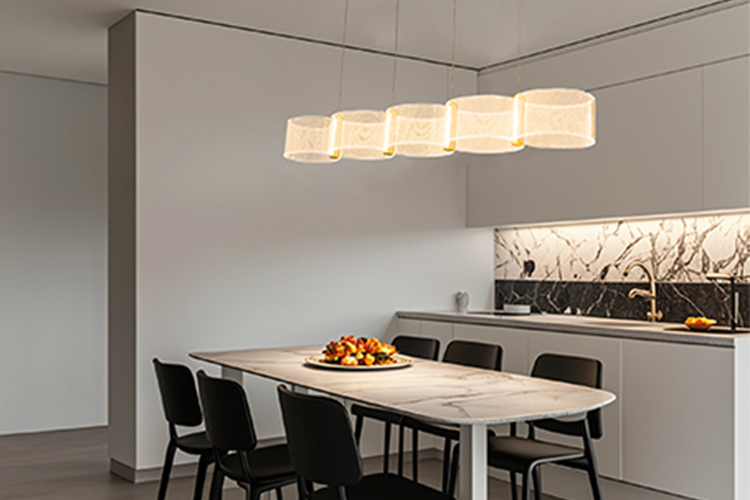
TABLE OF CONTENTS
Pendant lighting is a versatile and decorative fixture type suspended from the ceiling by a cord, chain. In professional interiors, pendants often serve as task or ambient lights, while traditional chandeliers and recessed downlights offer different functions. For example, chandeliers are multi-armed fixtures with many lamps mounted on branched frames, whereas pendants typically carry one or two lamps on a single suspension. Downlights (recessed ceiling fixtures) blend into the ceiling for general illumination, whereas pendants make a bold style statement above islands or tables. As shown in Figure 1, multiple pendant lights can be used in series (a cluster pendant) to provide both focused task light and decorative interest over a workspace or conference table. In layered lighting schemes, pendants commonly provide task/ambient light; accent lighting is more often executed with wall sconces or adjustable tracks.

Figure: A row of modern black metal pendant lights hung over a conference table, illustrates how pendants can combine form and function. Pendants typically provide directed light for tasks while also serving as design focal points。

Pendant Lights: These fixtures hang by a cord, chain, or rigid stem and usually contain a single lamp (or sometimes two) within a shade or housing. They are “less bulky and often more affordable than chandeliers”. Pendants work well in multiples (clusters) or singly, and can be scaled to match the space.
Chandeliers: Traditional chandeliers have multiple bulbs on decorative arms and are often larger in scale. They evolved from medieval “wheel chandeliers” (iron rings holding candles) used in churches. Modern chandeliers (e.g. crystal or tiered designs) are installed in grand spaces, whereas smaller chandeliers can be used in bedrooms or alcoves.
Downlights: Also called recessed or can lights, downlights are installed flush into the ceiling. They provide general, ambient illumination with a clean look and are ideal for standard-height ceilings or wide coverage. Unlike pendants, downlights blend into the ceiling and do not hang low. Designers often use pendants for accent/task lighting (e.g. over an island or table) and downlights for overall ambient lighting.
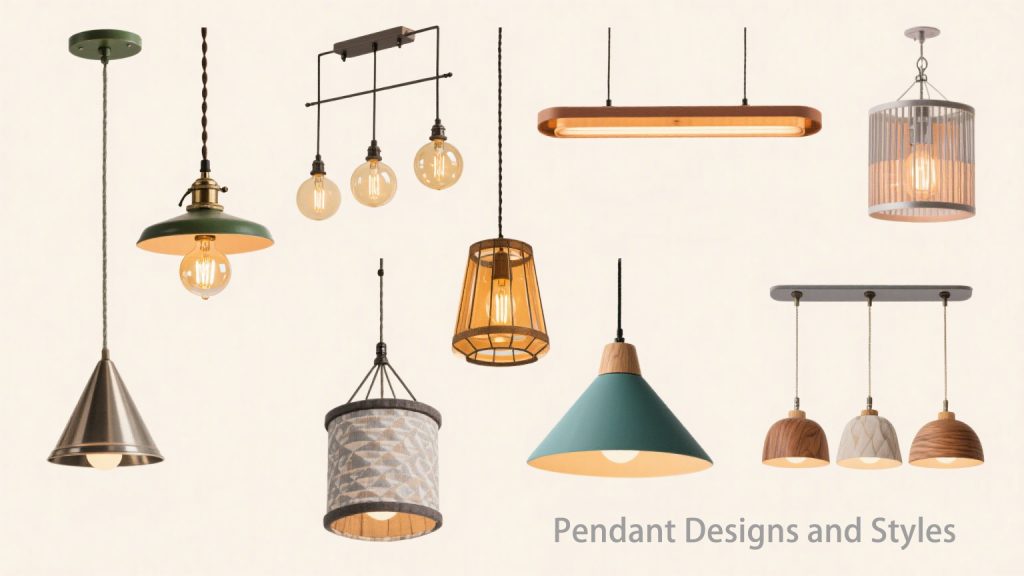
Pendants come in an enormous variety of styles to suit different decors. Common types include single-bulb pendants, multi-light pendants (clusters of 2–12 lamps on one canopy, similar to a chandelier), linear pendants (several lamps in a straight line, ideal over long islands), drum or cylinder pendants (fabric or metal cylindrical shades), bell- or cone-shaped downlight pendants (direct downward light, good for task areas), and up-light pendants (inverted shades that direct light upward for ambient illumination). Drum and fabric-shade pendants can add warmth and diffuse light softly, whereas metal or glass pendants give a crisp, modern look. For example, drum-shade pendants are “often made out of fabric” and add luxurious pattern or color to a space.
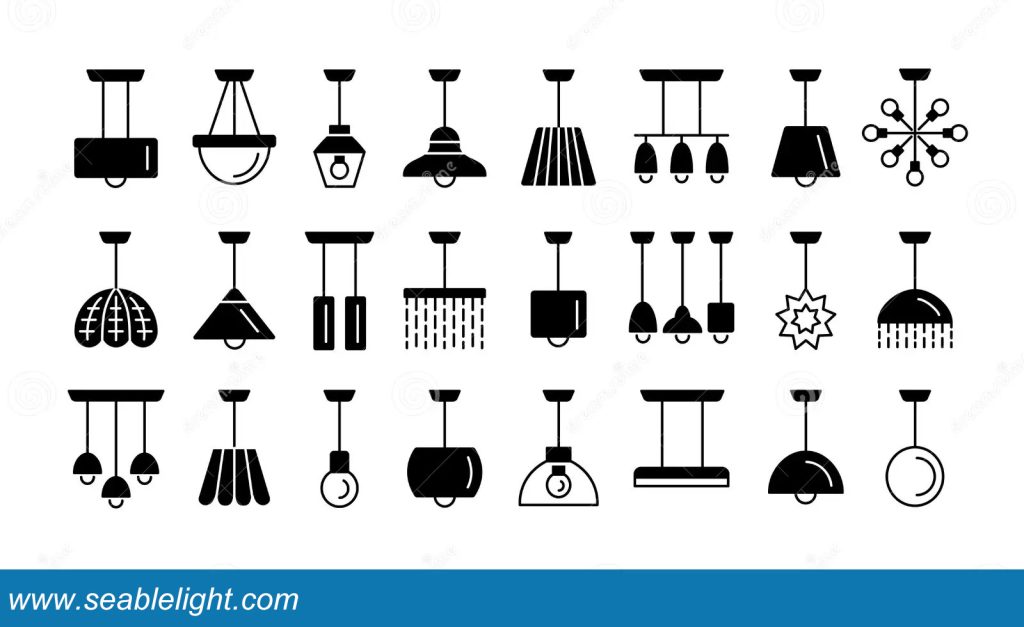
Current style trends favor sleek modern/industrial pendants, but many design languages are popular. According to lighting trade guides, “modern pendant lights are in style,” and other popular motifs include mid-century modern, vintage, industrial, contemporary, traditional, or mixed (transitional) design. Art Deco and vintage-inspired glass pendants (with geometric shapes and brass accents) remain in demand for period or eclectic interiors. Cluster groupings and asymmetrical arrangements of pendants are fashionable – for instance, staggering different heights or using pendants of varying shapes together.
Materials & Finishes: Pendant fixtures are built from durable, non-combustible materials for safety and longevity. The most common materials are metal (steel, aluminum, brass, copper) and glass, which offer both strength and a range of aesthetic finishes. Metal pendants often come in matte black, brushed nickel, polished brass or copper, bronze, or even bold lacquered colors. Glass pendants may be clear, frosted, or colored, and can range from hand-blown art glass to molded industrial shapes. Fabric (lampshade-style) pendants use flame-retardant fabrics on a frame, adding softness. Wooden or natural-fiber pendants (rattan, wicker) are also used in casual, bohemian, or eco-friendly designs.
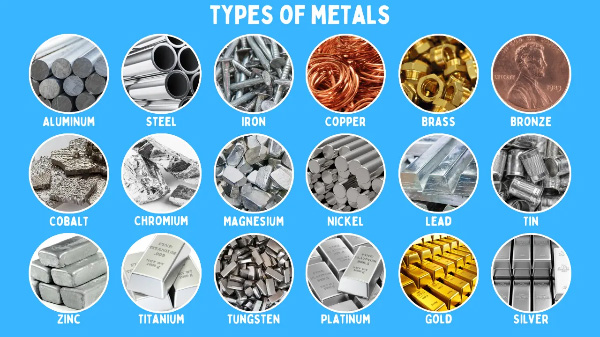
Suspension Systems: Pendants attach to the ceiling via mounting hardware and are suspended by rods, cables, or chains. Rigid downrods keep a fixed height and are often used for heavier metal fixtures or very high ceilings. Cables or cords (often with a decorative cloth or braided sheath) allow easy height adjustment and a lighter look; these are common for glass or fabric shades. Heavy pendants may include a safety cable or chain in addition to the electrical cord to support the weight (per electrical codes). Some systems use decorative chain (typical in traditional or outdoor pendants). Adjustable cable grippers or twist-lock connectors can set pendant lengths precisely during installation. In sloped ceilings, use a swivel canopy or special mount so pendants hang vertically.
Proper sizing and placement of pendants ensures both functionality and pleasing proportions. Here are key guidelines:
Height Above Work Surface: For pendants over tables, islands, or counters, the bottom of the fixture is typically 30–36 inches above the surface. Many designers aim for 30–32 inches above an island countertop. This height provides ample light on the work area without glare or head-bumping. Minimum clearance: In open spaces (no table), leave at least 7 feet (84") from the floor to the bottom of the pendant. Adjust height for taller users or ceilings: higher ceilings can accommodate 36"+ above a surface or longer pendants.
Spacing Between Pendants: When using multiple pendants (e.g. over an island or table), space them evenly for balance. A common rule is to leave ~12 inches of clear space at each end of an island, then space each pendant about 24–30 inches apart. For example, two pendants over an island are often spaced roughly 24–30″ apart and centered on the island. Three pendants: divide the island length into four equal sections and place a light at each of the three interior points. In general, aim for at least a 30″ gap between fixtures so they don’t look crowded. Another approach: make each pendant’s diameter about one-third to one-half of the island’s width.

Fixture Diameter: The diameter of a pendant’s shade should be proportional to the area it lights. A useful guideline is that each pendant’s width (or the width of a multi-light cluster) be ~1/3 to 1/2 the width of the table or island. For example, a 36″-wide island might pair well with a 12–18″-diameter pendant or 2–3 smaller pendants of ~6–10″ each.
Light Distribution Formula: To estimate total light output needed, multiply the room’s area by recommended lumens per square foot. As a simple example, a living room (180 ft²) at 10 lumens/ft² requires about 1800 lumens total. The Palecek lighting guide suggests 10–20 lumens/ft² for living rooms or bedrooms (≈1000–2000 lumens total) and 30–80 lumens/ft² for kitchens or task areas. In practice, kitchens and baths often target 30–50 foot-candles (≈30–50 lumens/ft²) for counters, meaning many thousands of lumens may be needed in bright-task zones.
Selecting Bulbs (LED Equivalents): For each pendant, choose bulbs (or integrated LEDs) that deliver the required lumens. As a rule of thumb, modern LEDs produce 70–110 lumens per watt. Typical LED equivalents are: ~800 lm (9–10W LED) replaces a 60W incandescent, 1100 lm (12–13W LED) replaces 75W, and 1600 lm (15–17W LED) replaces 100W. (Consult manufacturer specs or lighting facts labels for exact values.) In practical terms, a single 9–12W LED in a pendant provides bright task lighting (≈60–75W incandescent equivalent). Using dimmable LEDs allows fine-tuning of light levels.
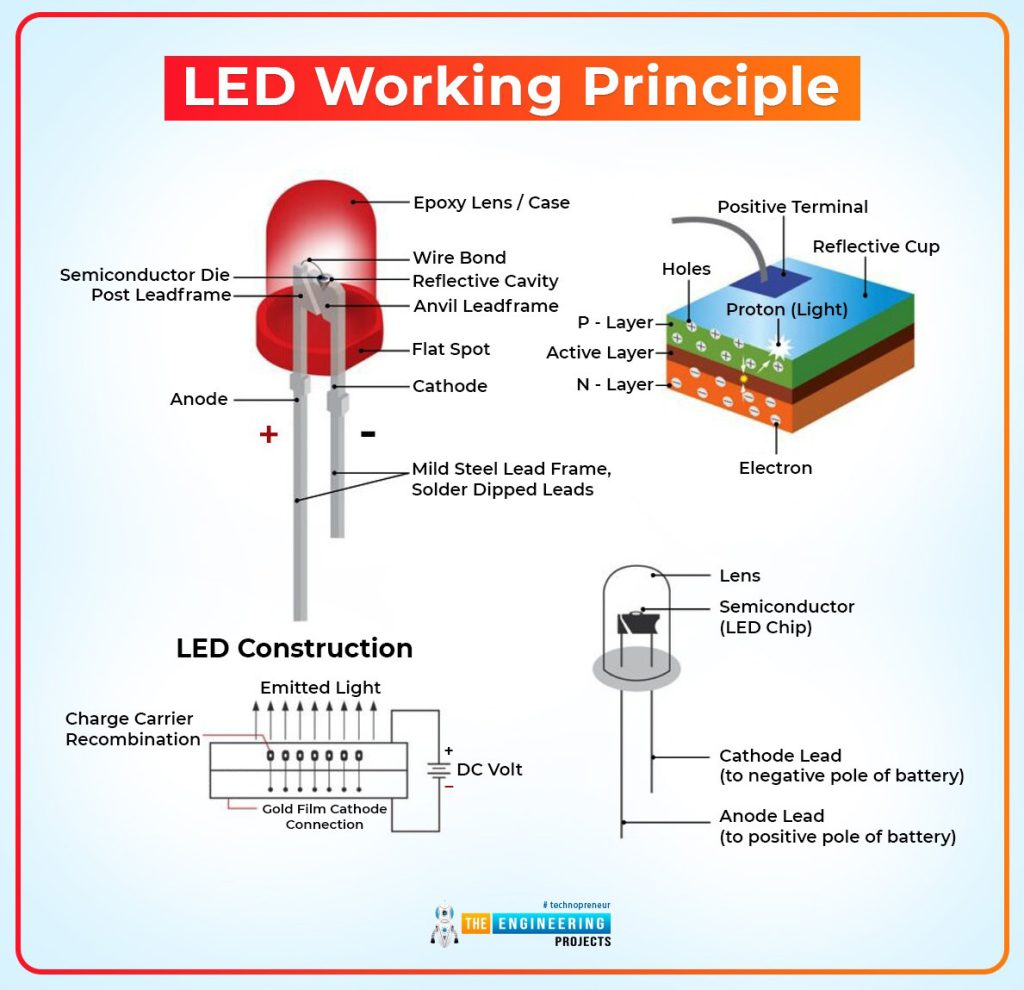
Arrangement: Pendants can be aligned in straight rows (ideal over islands or dining tables) or clustered more freely (e.g. at varying heights above a landing or in a foyer). Symmetry often works well over rectangular tables/islands. In larger spaces, consider grouping pendants in clusters or staggering them for an organic look. Ensure each pendant’s light beam overlaps slightly with neighbors to avoid dark spots. Consider beam spread: pendants with wide shades or diffusers have broad coverage, whereas narrow, directional pendants require tighter spacing.
The optical performance of pendant lighting depends on lamp/lens choices:
Beam Type: Pendants can deliver downlight, up-light, or a combination. Downlight pendants (e.g. bell/conical shades) focus light downward for tasks. Up-light (inverted) pendants shine light on the ceiling, boosting ambient illumination. Some pendants have diffusing shades or glazes that soften glare and spread light more evenly. Use transparent or translucent materials for brighter output; opaque materials to direct or soften light.

Color Temperature (CCT): Choose a color temperature suited to the space. Warm white (2700–3000K) creates a cozy, inviting glow ideal for living rooms and bedrooms. Neutral (3500K) or cool white (4000K) is often used in kitchens, workspaces, and bathrooms for a crisp, alert light. Very cool (>4000K) tends to feel stark and is typically reserved for industrial or task environments. In general, 2700K–3000K LEDs complement warm décor and skin tones, while 4000K suits modern stainless or bright-colored kitchens.
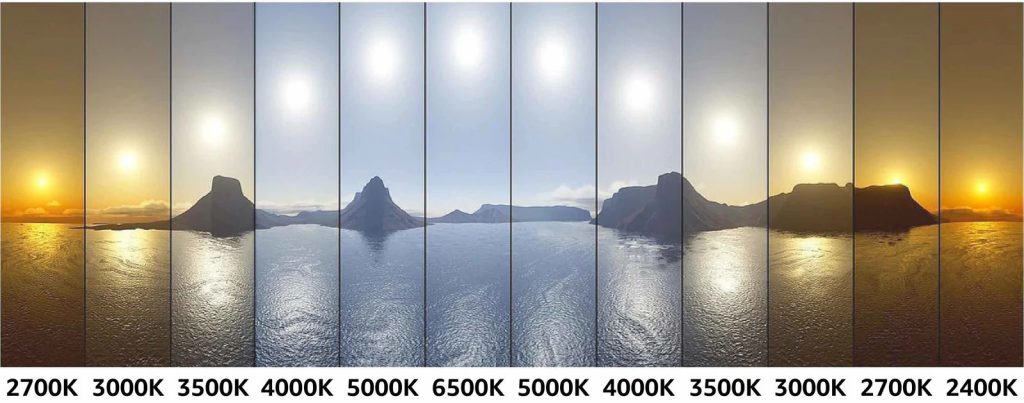
Color Rendering (CRI): Use bulbs or LED modules with high CRI (90+) in color-critical areas (kitchens, retail, galleries) so materials and skin tones look natural. Standard high-quality LEDs achieve CRI 80–90, which is sufficient for most residential use.

Dimmers and Controls: Integrating dimmers is highly recommended. Dimming not only adjusts mood and reduces glare, but can extend lamp life and save energy. Modern LED pendants should be paired with compatible LED dimmers (phase-cut or digital). Occupancy sensors or smart controls (e.g. programmable schedules) can further enhance efficiency, ensuring lights are on only when needed. As an engineer’s guide notes, energy efficiency is a compliance priority: LEDs and controls minimize power use compared to older bulbs.
Pendant lighting has ancient roots but evolved significantly over time. Early “hanging lights” date back to Roman and Byzantine times (oil lamps on chains or wooden wheel chandeliers in churches). In Europe, iron crown chandeliers (9th–12th century) were common in cathedrals. Gas lighting and then electric lighting led to new fixtures: crystal chandeliers were popular in the 18th–19th centuries, signifying wealth.
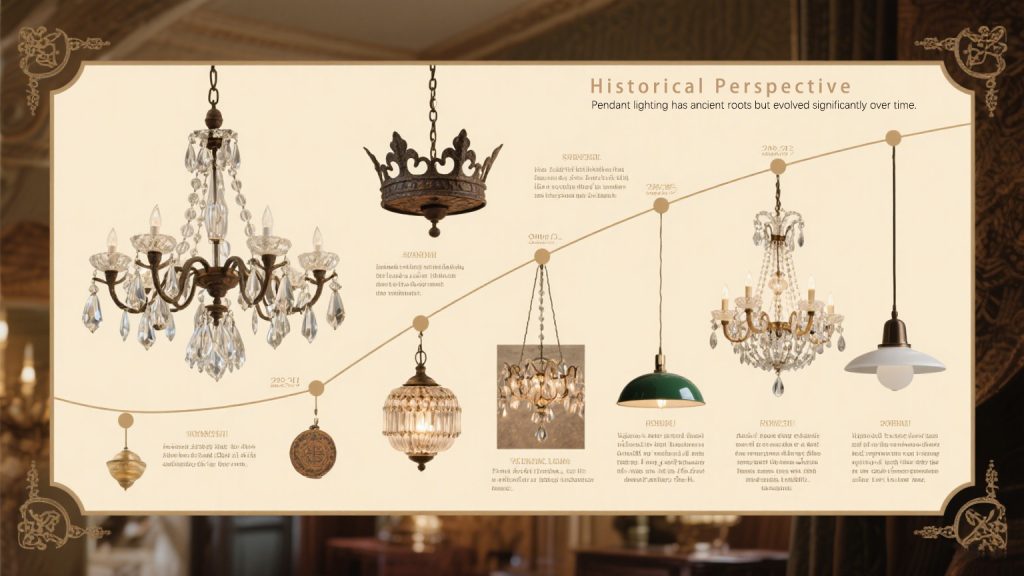
Art Deco and early modernist designers (1920s–40s) introduced geometric and sculptural pendant fixtures. Sleek glass and metal pendants became hallmarks of mid-century design. By the mid-to-late 20th century, as one source notes, “chandeliers often did not fit the aesthetics” of modern interiors and their popularity declined, making way for simpler pendants. Today’s pendants echo many historical styles – from ornate lanterns to industrial cage shades – while leveraging LED technology. The resurgence of hand-blown glass (Murano, Art Nouveau-style) and artisanal pendants shows how past design vocabularies are continually reinterpreted for contemporary homes.
Pendant lights excel in functional zones where localized illumination is needed, and also as decorative focal points:
Kitchen Islands and Counters: One of the most common uses. Pendants over an island or peninsula provide task lighting for cooking and prep. Typically 2–4 pendants are used on islands (depending on length), spaced evenly as discussed. Glass or semi-transparent shades can help spread light onto the countertop. Do not install pendants directly above cooktops unless rated for heat and placed according to code (some kitchens use flush-mounted hoods or dedicated exhaust lights above stoves).
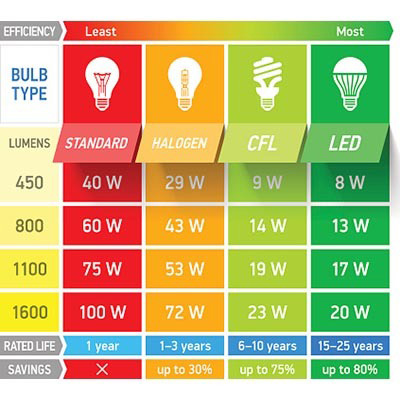
Dining Room: A row of pendants or a chandelier-style multi-light pendant above the dining table creates ambiance. Hanging height is similar to kitchen islands (about 30″ above table top). For large or oval tables, two smaller pendants may be used instead of one central fixture. Pendants in dining areas can also be decorative (e.g. a drum shade that complements the décor).
Living and Bedroom: In living rooms, pendants can highlight seating areas or flank a sofa. Over a coffee table, a single large pendant or cluster can work as an artful centerpiece. In bedrooms, pendants at bedside tables (hung low) are a current trend. Two small pendants on either side of the bed (at ~24″ above nightstand level) replace table lamps and free up surfaces. In closets or reading nooks, a small pendant adds focused light. In high-ceiling hallways or foyers, a sculptural pendant or chandelier provides drama (scale is key here).
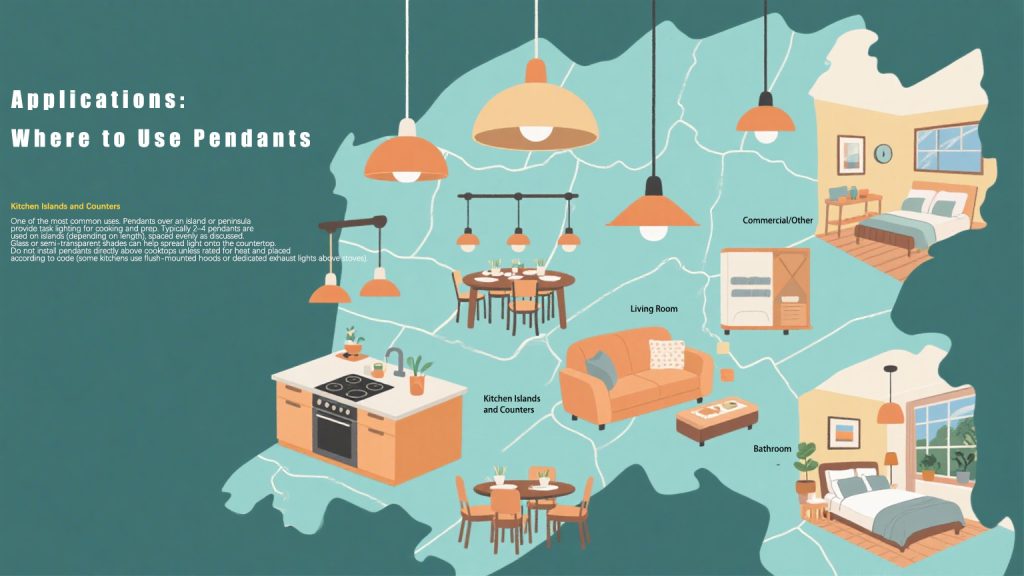
Bathroom: Pendants are less common but can be used safely with the right rating. Above a vanity or mirror, pair pendants or a linear multi-light fixture. For example, one can use two pendants on each side of a bathroom mirror at about 60–65″ above the floor (similar to sconce height). Alternatively, a single pendant over the tub or vanity can add style.
IMPORTANT: In wet areas, use fixtures rated for damp/wet locations. European/IP conventions classify shower zones: lights directly above a tub/shower (Zone 1) require at least IPX4 (splash-proof). In practice, any pendant in a bathroom should be at least IP44 or UL “damp rated” – and include GFCI protection if near water.
Outdoor: Under a covered porch or gazebo, pendants labeled for outdoor use (wet-rated) can create a welcoming entry. (They must be weatherproof.) A popular use is a lantern-style pendant by a front door. Under eaves, pendants should be a minimum height and secure against wind.
Commercial/Other: Pendants are often used in hospitality (bars over counters, hotel lobbies) and retail (display lighting). In commercial design, spacing follows similar rules but may also follow calculable criteria for uniformity. For example, a shop or office with 8′ ceilings might install pendants at 30″ AFF (above finished floor) for general lighting, maintaining at least 7′ clearance.
Pendant installations must comply with electrical codes and safety standards:
Mounting & Support: Always install pendants on a proper ceiling junction box rated to support the fixture’s weight. Use the manufacturer’s mounting hardware. Heavier pendants (especially glass or metal) often include a safety tether or cable in addition to the cord for secondary support. Never rely on paint or drywall alone.
Wiring: Pendants should be hardwired by a qualified electrician to the building’s circuit. Use the correct conductor gauge and secure connections (wire nuts) inside the canopy. Grounding is required for metal fixtures (ensure a ground wire is connected to the metal canopy). If mounting on a sloped ceiling, use angled canopy adapters to maintain vertical pendant drop and hide wire.
UL/ETL Listing: In the U.S., use only fixtures listed by UL (Underwriters Laboratories) or an equivalent (ETL) for the intended location. A “UL Listed” or “ETL Certified” pendant has been tested for electrical safety. They will specify if the fixture is suitable for Dry, Damp, or Wet locations.
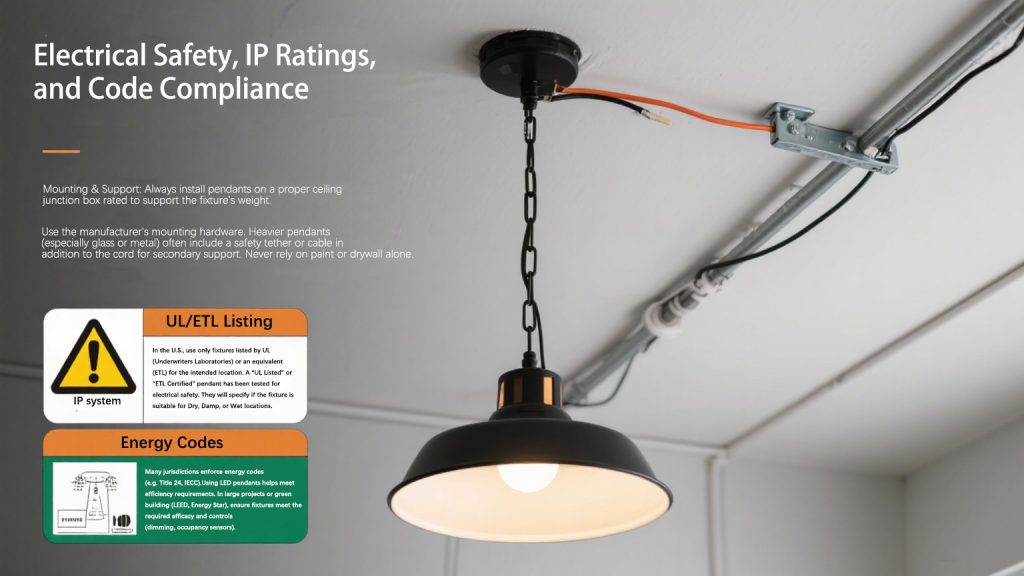
Generally: Dry location: Bedrooms, living rooms, dining rooms, etc.
Damp location: Kitchens, laundry rooms, covered patios, or bathrooms (outside shower). These areas get humidity or occasional splashes.
Wet location: Areas exposed directly to water jets or rain (inside showers, open outdoors). Only pendants rated for wet locations should be used here.
Bathroom IP/Damp Rating: Referencing the European IP system (Ingress Protection), pendant lights around water must be rated at least IPX4 (protected against splashes) in Zone 1 or 2 (within ~3.3 ft of water). If a pendant is over a sink or tub (even from a bit of a distance), damp rating is prudent. Note that all fixtures in Zone 1 (directly over tub/shower) need a GFCI (RCD) protecting the circuit in many jurisdictions.
Height from Ceiling: Follow the NEC/IEE guidelines: typically, fixtures must be at least 18″ from combustibles (for exposed bulb pendants) unless rated for direct contact. Also, maintain 6″ clearance from insulation (or use IC-rated canopy) if in contact with attic insulation. Check local code for specific clearance requirements above stovetops or hoods.
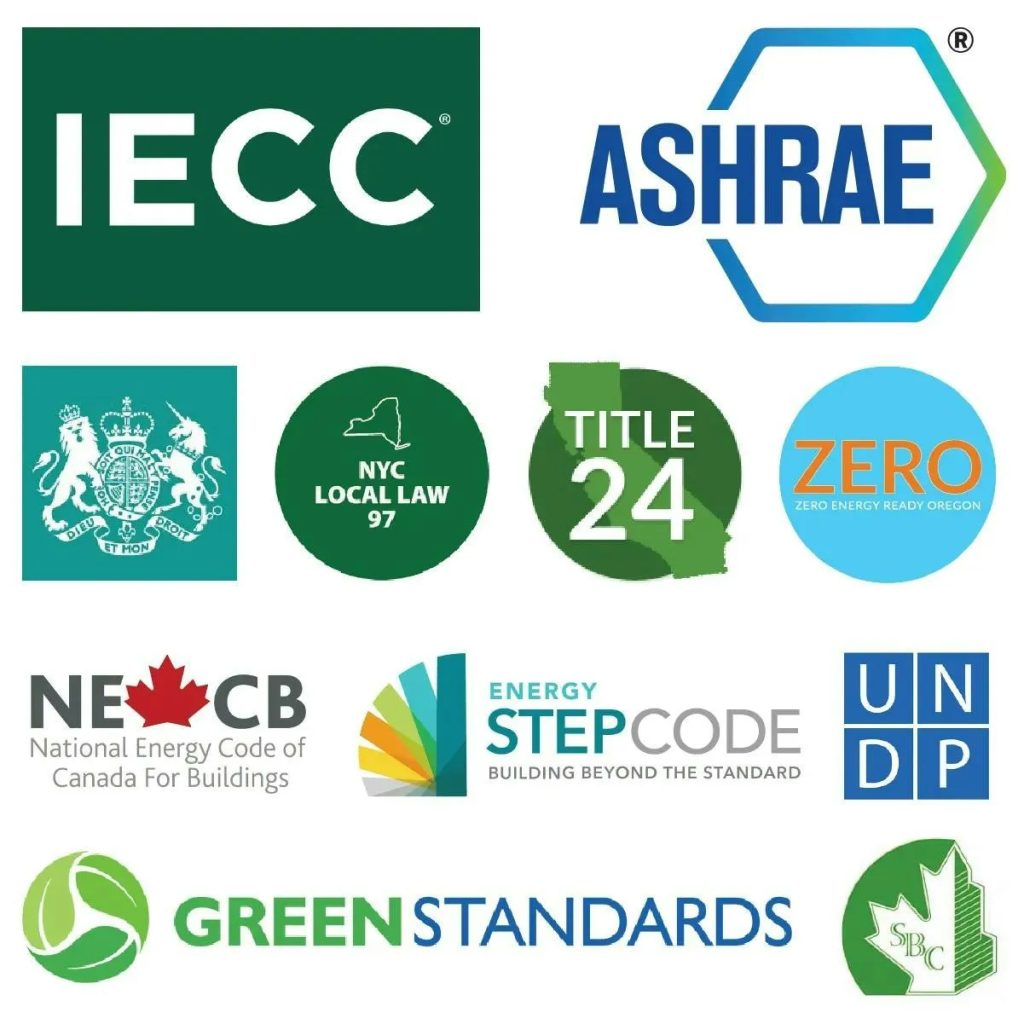
Energy Codes: Many jurisdictions enforce energy codes (e.g. Title 24, IECC). Using LED pendants helps meet efficiency requirements. In large projects or green building (LEED, Energy Star), ensure fixtures meet the required efficacy and controls (dimming, occupancy sensors).
Professional designers often rely on quick formulas:
Lumens Required: Total lumens ≈ (room area in ft²) × (target lumens/ft²). For example, an 180 ft² living area at 15 lm/ft² needs ~2700 lumens (split among fixtures). This “rule of thumb” is validated by lighting design guides that give ranges for different spaces.
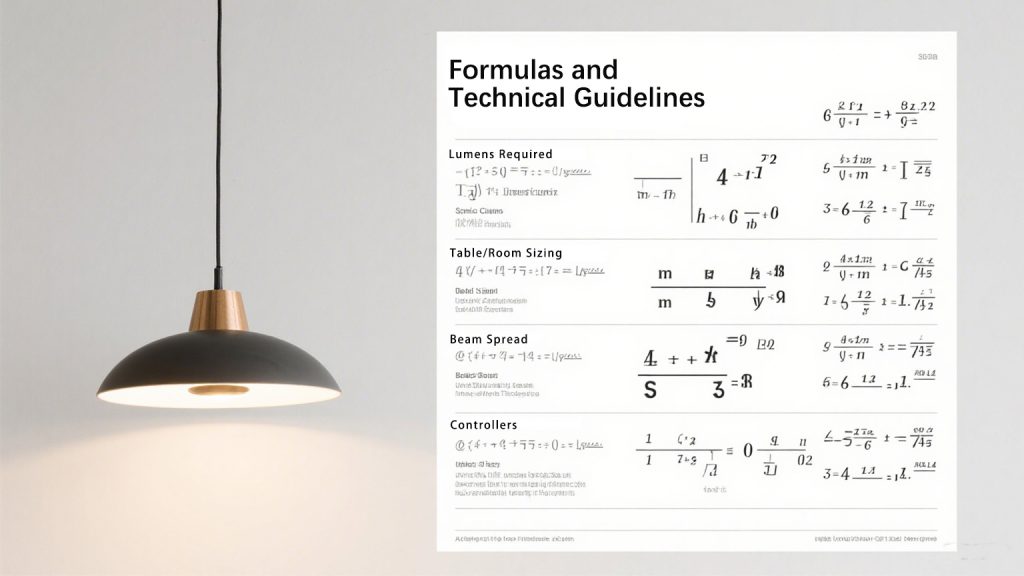
Spacing Criterion: For uniform illumination from multiple fixtures, spacing (in feet) is often about equal to mounting height (in feet) above the target plane. For example, a pendant hanging 3 ft above an island might be placed ~3–4 ft apart. While pendants are not evenly luminous like downlights, this can guide grid layouts in commercial lighting.
Table/Room Sizing: Another common formula: Dining Table – pendants should not be wider than table width; often ⅓–½ of table width for single pendants. Room Size – add the room’s dimensions (in feet) and use that total (in inches) as a guide for max chandelier diameter. E.g. a 12′×15′ room has 27′, so a ~27″ fixture is appropriate. While this last rule is for chandeliers, designers adapt it by summing length+width for pendant visual scale too.
Beam Spread: If using directional pendants (e.g. spot-light types), ensure overlap. The “spacing criterion” (open-area ratio) can apply: spacing ≈ Mounting height / (lamp spacing criteria). (See IES Lighting Handbook for exact formulas.)
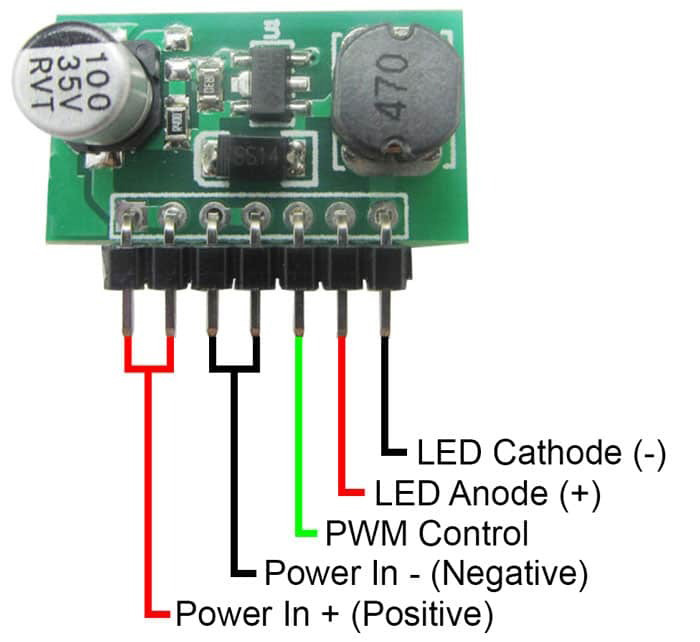
Controllers: For dimming, check that the load type matches the dimmer (TRIAC vs LED-driver). Use the dimmable types of bulbs or integrated drivers when required. For smart controls, ensure compatibility and code compliance with wireless protocols.
Finally, a few expert tips and trends:
Smart & Adaptive Lighting: Integrating pendants with smart controls (dimmable LED drivers, occupancy sensors, color tuning) is growing. Systems that allow scene-setting (different brightness for tasks vs relaxation) can enhance both comfort and energy savings. Specifying pendants that are compatible with daylight harvesting or circadian tuning systems is a forward-looking strategy in offices and health-care design.

Visual Comfort: Avoid glare by choosing shades or diffusers that conceal the bulb from direct view at seating height. For example, use frosted or white interiors to spread light softly. When glass pendants are used, consider indirect uplighting or internal diffusers. Also be mindful of flicker with cheap LED drivers; specify high-quality LED modules for professional applications.
Maintenance Access: In high installations, ensure that bulbs or LED modules can be replaced or cleaned. Use drop rod heights or stems that can be accessed with a ladder, and ensure the canopy is removable for wiring checks. In projects, call out “support hardware provided” and “easy access above ceiling” on plans if needed.
Consistency & Coordination: When selecting pendants for multiple rooms, keep a cohesive theme. Small changes in finish or shade style can make or break coordination. Also match the pendants’ finish and color temperature with other fixtures (sconces, ceiling lights) in the scheme.
Consult Codes & Manufacturers: Always review local building codes and fixture data sheets for specific requirements (e.g. clearance above cooktops, flame spread of cords). Manufacturers often provide design guides (beam angles, lumen outputs) – use their photometric data to verify uniformity and brightness levels.

Dear Customer:
My name is Terriza, Sales Director at Seable. With 8+ years of dedicated expertise in the decorative lighting industry, I bring the technical acumen and market insights to elevate your projects. Expert in pendant light system configuration, lighting design and ceiling light technology support. Feel free to contact me. I’m happy to provide you with the best service and products
Whatsapp: +86 188 8192 2985 | Email: sale2@okelilamp.com
